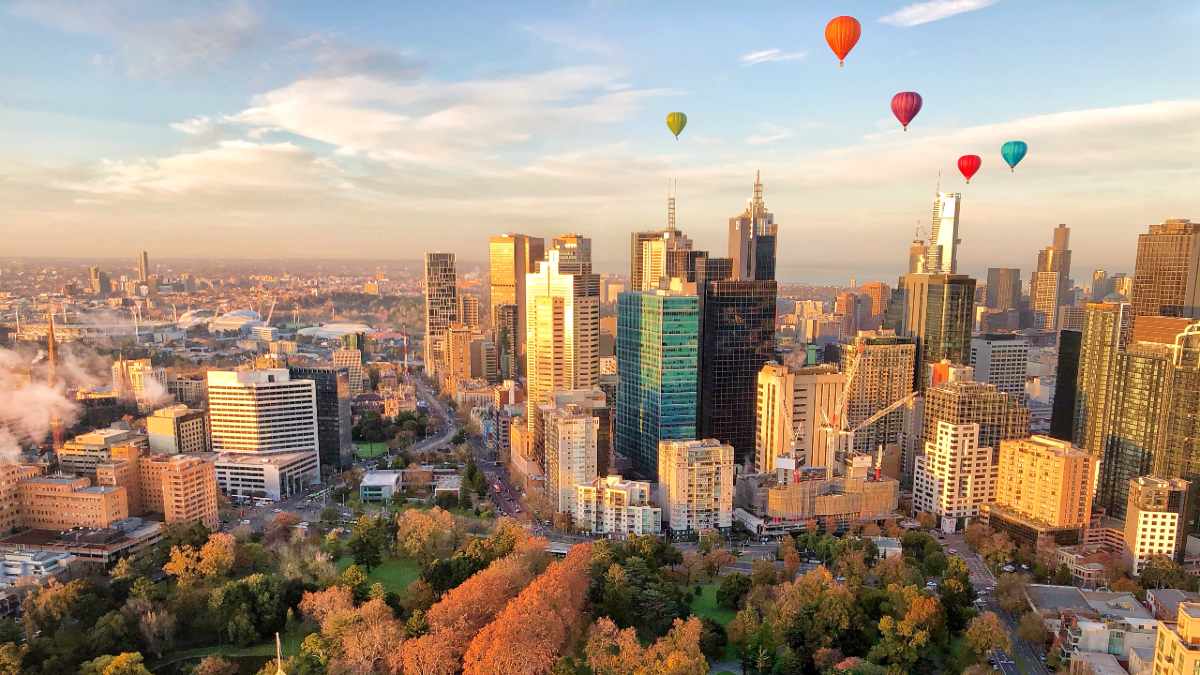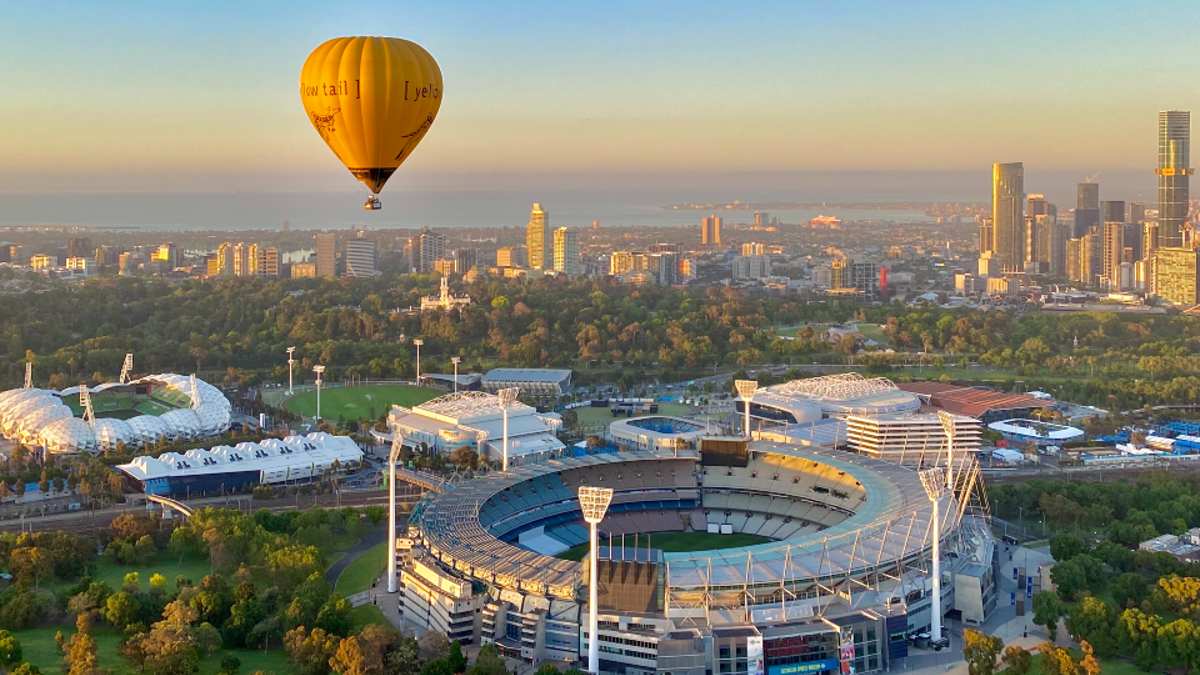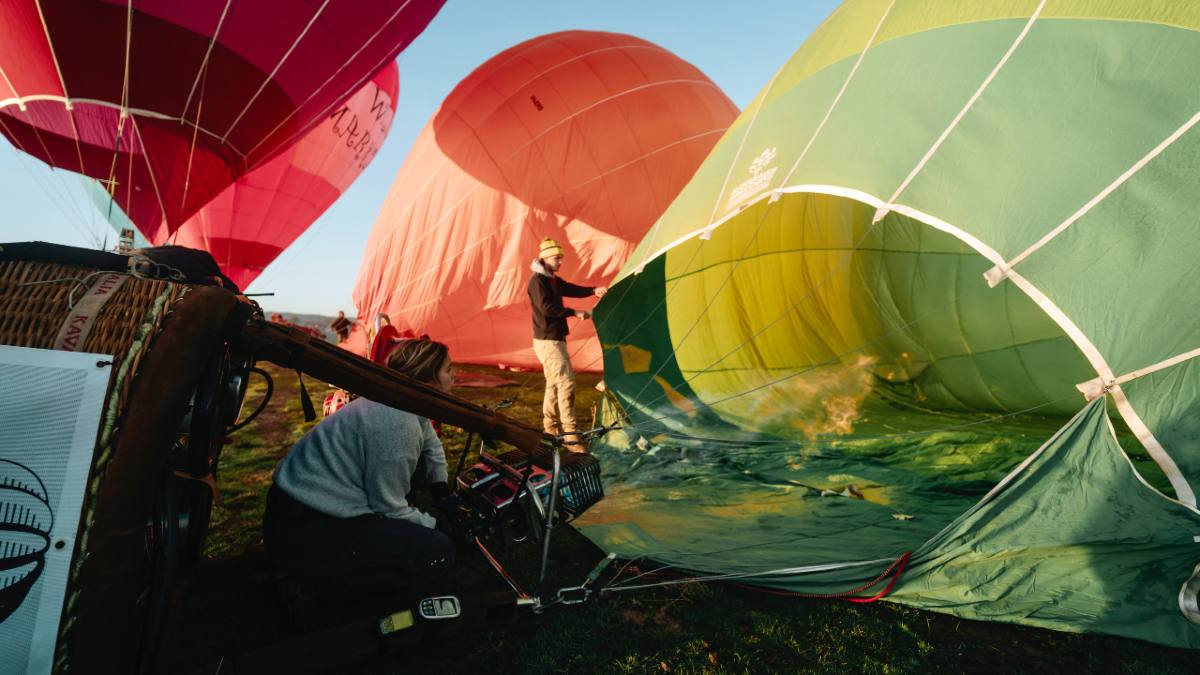With a bit of planning, you can see the spectacular Aurora Australis and Southern Lights even in skies above Melbourne and Victoria.
Why Melbourne is leading the hot-air ballooning industry 150 years on

Melbourne’s connection to the oldest form of flight runs deep, with the city offering hot-air ballooning experiences not seen anywhere else in the world.
On a clear morning in Melbourne, it’s not unusual to spot hot-air balloons floating high above the city. It’s a common sight for locals who might not realise the true rarity of the heavenly spectacle.
“It’s extremely unusual,” says Kiff Saunders, the director of the Victoria’s largest ballooning operator, Global Ballooning. “I would say [Melbourne] is the only major, popular city that you could traverse by balloon.”
As a city known globally for its food, coffee, and sport, Melbourne is also a city unique for its ballooning culture, with the world’s oldest successful method of manned flight continuing to attract around 11,000 visitors and locals to its skies every year.
“Drifting through the sky in a balloon... I think everyone has a vision of that,” Saunders says. “For me, just being able to float above the world, looking down as the city or where I am comes to life with all those changing colours... I never get sick of it.”
RACV Members can access discounts on hot-air ballooning experiences.
Melbourne’s connection to the oldest form of flight
It’s been more than two centuries since humanity first ascended into the skies, with the Montgolfier brothers (and their pilots, Jean-François Pilâtre de Rozier and François Laurent d'Arlandes) soaring into the history books in 1783.
It wouldn’t be until 1858, however, that manned flight would come to Australia. When it did, it came to Melbourne, with the country’s first recorded hot air balloon flight taking off from Cremorne Gardens Amusement Park in Richmond, marking the start of Melbourne’s ballooning industry.
Despite its age, ballooning remains one of the safest forms of aviation. “There’s not much to go wrong in a hot air balloon,” says Saunders. “There’s probably about eight moving parts... really, it’s just a bag with some hot air going into it.”
More than two centuries after it took off, the appeal of ballooning is showing few signs of slowing down.
“Ballooning has grown over the years,” says Saunders, speaking with more than three decades of experience under his belt. “It’s got a much higher profile and certainly with the invention of digital photography and the internet... there’s so much more exposure for people to see that imagery [of flying] and capture their imagination.”
“We really appeal to people who just want to get out and live life.”
Guided by the wind
This relatively simple (not to mention, idyllic) form of flight isn’t without its challenges. Ballooning is a meteorology-based form of flight, meaning it’s extremely reliant on the weather, as opposed to aeroplanes and helicopters which rely on mechanical engineering to achieve lift.
“We’re harnessing nature’s forces to be able to steer the balloon. We're using different winds at different levels [of height] to navigate the balloon to our landing point,” says Saunders, explaining how balloonists work in a world of “micro meteorology” where small changes can make a huge difference.
The weather-based form of flight is also one of the reasons why Melbourne is so unique in terms of the commercial ballooning industry, and why it’s the only place in the world where balloons regularly fly passengers over the city itself.
“We have actually quite good weather, believe it or not,” says Saunders explaining that while some flights are postponed due to inclement weather, more than half of all booked flights do take off on schedule.
It’s not just the weather balloonists have to contend with when flying in an urban environment – they've got to account for other aircraft as well, plus have nearby locations in which the balloons can safely take off and land. And thanks to Melbourne’s combination of city parkland and decentralised airport, these factors are mitigated, creating a unique experience for passengers.
“I always say that ballooning in Melbourne is like having frogs in your pond. It’s a sign of why Melbourne is the most liveable city.”
Hot-air ballooning myths
Balloons can’t fly in winter
Being weather dependant, the warmer months tends to be the prime time for ballooning. “The first of October is our official opening of the season, although we do trade throughout the year,” Saunders says. Keep in mind that while you can still book flights in winter, there is the chance they may need to be rescheduled to the risk of unsuitable weather.
Ballooning is low-tech
Just because it’s the oldest form of flight, doesn’t mean there haven’t been advancements in the industry, particularly when it comes to navigational and meteorological tech. “When I started ballooning, you took off and kind of worked out where you were going to land once you were flying,” says Saunders. “Nowadays we can be incredibly accurate.”
Ballooning is inaccessible
Passengers travelling in hot-air balloons are carried in the basket, which generally you must climb over the top to enter. In 2012 Saunders helped develop the Easy Access Basket (EAB) which allows passengers with physical mobility impairments to also enjoy the thrills of ballooning. Pregnant passengers are also welcome to fly during their first and second trimesters, as are children aged six and up.
Ballooning is cold
It’s natural to think that because you’re high in the sky that you’ll be chilly during your flight, but that’s not quite the case. You’ll feel the same temperature flying as you do on the ground - the balloon burners are known to keep passengers quite toasty. And since balloons fly with the wind, you won’t feel any wind chill






